Bodywork abrasive belts

Abrasive belts for car bodywork
-
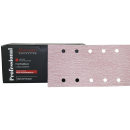 SR115-XXXX115x230mm sanding beltP80 to P600 - long life - X100
SR115-XXXX115x230mm sanding beltP80 to P600 - long life - X100 -
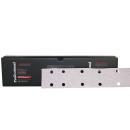 SR70-XXXX2in1LongLife abrasive belts70x396 or 70x198
SR70-XXXX2in1LongLife abrasive belts70x396 or 70x198 -
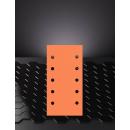 3354.1320115x230mm sanding beltGrain P320 - 10 Velcro holes
3354.1320115x230mm sanding beltGrain P320 - 10 Velcro holes -
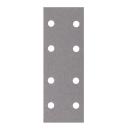 3355.0xxxVelcro abrasive belts70x198mm - 8 holes
3355.0xxxVelcro abrasive belts70x198mm - 8 holes -
 3355.1180Sanding belt 70x198mmGrain P180 - 8 Velcro holes
3355.1180Sanding belt 70x198mmGrain P180 - 8 Velcro holes -
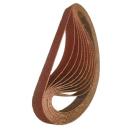 91xxxAbrasive beltsfor sanders - Box of 10
91xxxAbrasive beltsfor sanders - Box of 10
︾
Bodywork abrasive belts available on the Carross website:
Carross offers a wide range and numerous models of sanding belts. We list velcro sanding belts, sanding belts and pre-cut sanding rolls from the Carross brand. Our sanding belts are suitable for all types of sanding, whatever your bodywork requirements: metals, steels, plastics, etc. You can refine your search according to your criteria by selecting the width or length of your sanding belt. Carefully selected by the Carross team, the sanding belts in our shop all have unequalled sanding capacity and excellent resistance to clogging. Their long service life means you can work regularly and efficiently, and all at a low price! If you still have questions about our products, find out more about our sanding belts below!
Whatever your needs, Carross has the right sanding belt for you! Our products are of professional quality and can sand a wide range of materials: aluminium, primers, wood, composites, copper, metal, etc. What's more, the sanding belts we offer are designed to fit all your machines. If you're in any doubt, our sales team will be happy to help.
Which abrasive paper should I use for my car bodywork?
Do-it-yourselfers and body repairers alike know that sanding is very important for perfect bodywork. And to achieve this result, you need the right equipment! Not all sanding papers are of the same quality. Fortunately, Carross has selected the best abrasive products, whether it's the sanding sheets you'll find in this section, the Abrasive discs you'll find at this address, or even our entire selection of sanding equipment. The choice of sanding paper depends on what you're going to use it for. If you need to do some finishing, choose a fairly fine grit (between 150 and 220). On the other hand, if you need to do more general work, choose a coarse grit (from 80 upwards). Carross abrasive products come in a variety of grits (from 80 to 2500) for sanding a wide range of car surfaces.
Example of sanding belts for car bodywork
If you're looking for a versatile, high-performance sanding belt, you'll find what you're looking for at Carross. For example, we offer the SR70 sanding roller: it sands any type of material and is perfectly suited to your bodywork work. What's more, you can choose from a wide range of grits: from P80 to P600! Note also that this abrasive tears easily. On the other hand, SR 70 doesn't clog up easily, thanks to its special treatment. So dust won't be a problem for you, and it won't reduce the life of your sanding belt! Whether you're touching up or applying a finish to your car or motorbike, your bodywork will be perfect!
Protection before using sanding paper
Like all bodywork consumables, sanding paper should be used with care. Even though we're going to mention the category of abrasives here, don't forget to take great care when handling car paint! Carross stocks a wide range of products to protect you from cuts and dust, for example. You can find all these protective products in the Carross online shop.
Using bodywork sanding belts:
Carross sanding belts are versatile tools used in the car body industry for sanding large surfaces. Here's how to use bodywork sanding belts effectively:
Choosing the sanding belt :
Select an abrasive belt suited to the material you are going to sand. Body sanding belts are available in different grits, from coarse to fine, depending on the specific needs of your project.
Fitting the sanding belt:
Attach the sanding belt to the belt sander according to the manufacturer's instructions. Make sure the belt is properly tensioned to prevent excessive movement during Sanding.
Preparing the surface:
Before starting Sanding, make sure the surface to be treated is clean and free from dust or debris. This will ensure optimum performance from the sanding belt.
Setting the speed :
Adjust the speed of the belt sander to suit the material you are working with and the task in hand. Too high a speed can lead to overheating, while too low a speed can reduce sanding efficiency.
Sanding technique:
Use smooth, even strokes to sand the surface. Avoid staying in one place for too long to avoid overheating and unwanted marks. Follow the contours of the bodywork evenly.
Sanding in constant motion:
To avoid uneven sanding marks, be sure to move the belt sander constantly during operation. This ensures that the pressure is evenly distributed over the surface.
Changing the sanding belt:
When the sanding belt shows signs of wear or loses its effectiveness, replace it with a new one. Using a worn sanding belt can lead to uneven sanding and poor results.
Dust extraction:
Use a dust extraction system built into the belt sander or an external hoover to minimise dust. This improves visibility of the work area and reduces health risks.
Finishing with fine grit:
To achieve a smooth surface ready for Paint or other treatments, finish the Sanding with finer abrasive belt grits. This will remove any marks from the initial sanding.
Inspecting the surface :
Once Sanding is complete, inspect the surface to ensure that all imperfections have been removed. If necessary, carry out additional touch-ups.
It is important to follow the belt sander and sanding belt manufacturer's recommendations to ensure correct and safe use. By following these steps, you can optimise the use of bodywork sanding belts to achieve professional sanding results.
FAQs on bodywork sanding belts :
The use of bodywork sanding belts often raises questions among users looking to perfect their sanding technique. Here are some answers to the most common questions about the use of these essential tools in the bodywork industry:
1. What's the difference between the different grit sizes of bodywork sanding belts?
Bodywork sanding belts are available in a range of grit sizes, from coarse to fine. Coarse grit is used for initial sanding, while finer grit is used for finishing. The choice depends on the level of abrasion required for your project.
2. How do I choose the right sanding belt for the type of material I'm working on?
Choose an abrasive belt according to the material you are going to sand. Metals may require specific sanding belts compared to plastics or Fiberglass. Check the manufacturer's recommendations for the best choice.
3. Can I use the same sanding belt for different stages of Sanding?
Ideally, use different grit sanding belts for different stages of Sanding. Coarse grits are suitable for initial sanding, while fine grits are used for finishing. This ensures more accurate results.
4. How can I avoid unwanted sanding marks when using sanding belts?
Use smooth, even strokes. Avoid staying in one place for too long, which can lead to overheating and unwanted marks. Keep the sander moving constantly to ensure even pressure.
5. What is the typical life of a bodywork sanding belt?
The life of a sanding belt depends on a number of factors, including the material being worked on, the pressure exerted and the quality of the belt. Change the belt as soon as it shows signs of wear to ensure optimum results.
6. How do I clean an abrasive belt while sanding?
Some sanding belts can be cleaned during use using special brushes to remove sanding residue. However, it is often more effective to change the sanding belt to maintain consistent performance.
7. Are bodywork sanding belts compatible with all belt sanders?
No, not all sanding belts are compatible with all belt sanders. Make sure you choose belts specifically designed for your model of sander, following the manufacturer's recommendations.
8. How can I minimise dust when sanding with abrasive belts?
Use a belt sander fitted with a built-in dust extraction system. You can also work near an external hoover to reduce dust and improve visibility of the work area.
By understanding these answers to common questions, users can perfect their use of body sanding belts to achieve precise, professional-quality sanding results. Matching the grit size, following the manufacturer's recommendations and using the correct Sanding technique are essential for an efficient and satisfying job.